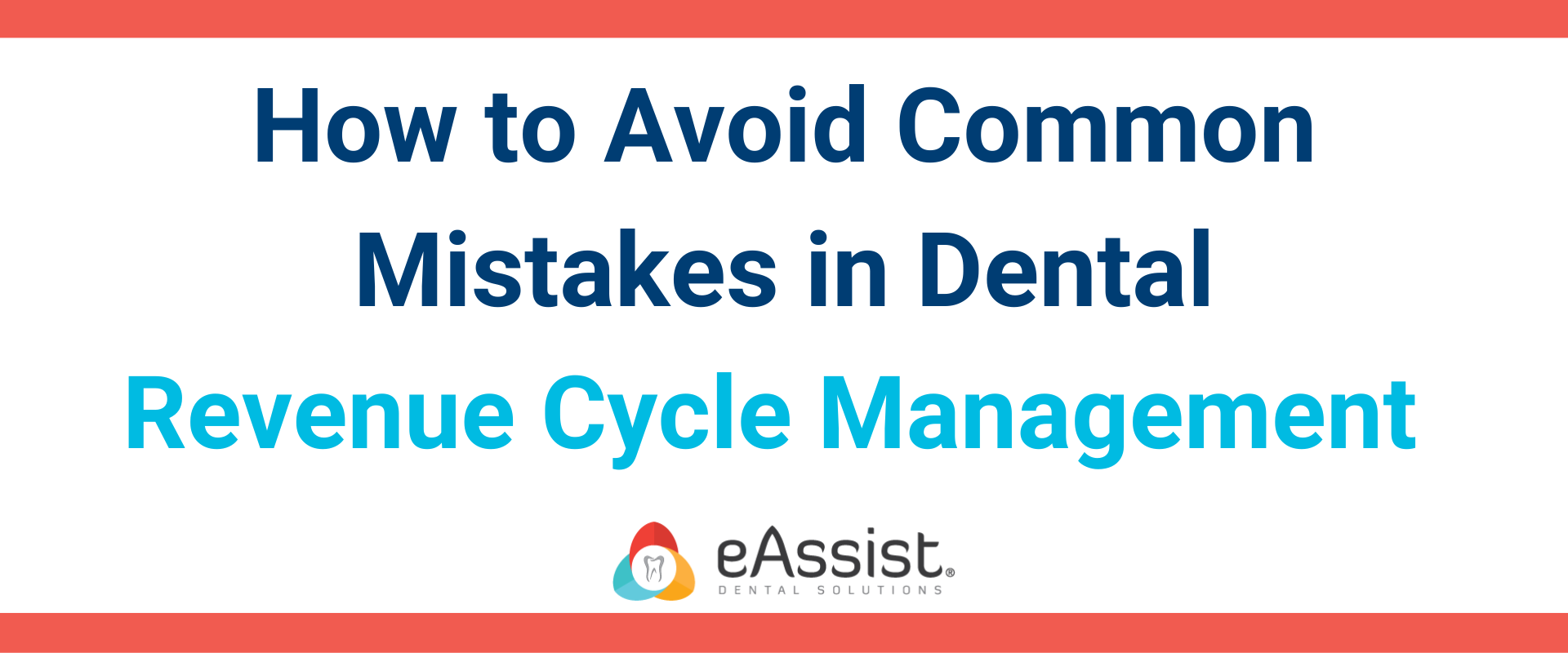Revenue Cycle Management is an extensive multi-stepped process. When combined with a busy dental practice, it can be vulnerable to errors. Although some errors are inevitable, without damage control measures in place, errors can add up and cause significant harm to a practice’s livelihood. With guidance, errors can be circumvented. The following will help you avoid common mistakes in dental revenue cycle management.
Insurance Verification Errors
The first step in dental revenue cycle management is insurance verification, an area often prone to mistakes. Too often, the process is taken lightly, and not enough time is spent verifying all the details of the patient’s insurance plan. A common misconception is that insurance verification is simply making a copy of the patient’s insurance card and confirming that coverage is valid for the service date. In reality, insurance verification is itself a multi-stepped process within revenue cycle management.
To avoid common insurance verification mistakes, be prepared before contacting the insurance company. Create a form template containing all the necessary details to fill out each time a plan is verified. These details should include the coverage period, annual maximum, deductible, covered benefits, frequency limits, coverage percentages, and more. Confirming more details during the insurance verification process can prevent mistakes later in the revenue management cycle. Another way to avoid insurance verification mistakes is by outsourcing this task to a knowledgeable, remote team of specialists.
Improper Claim Documentation
Documentation is critical when billing dental insurance. It is essential to have a properly completed ADA claim form and all necessary attachments. Both of these can be easily missed in a busy office, causing incomplete claims to be submitted to the insurance. When this happens, claims are automatically rejected, requiring the billing process to be repeated.
To avoid this common mistake in dental revenue cycle management, complete all areas of the claim form and double-check your process to ensure nothing is skipped. Include all that is necessary in your attachments. Review the narrative to ensure it’s accurate and thorough. Make sure x-rays are legible and indicate the treatment area, and attach all supplementary materials, such as referrals, lab slips, and perio charts. To avoid missing anything during the billing process, consider outsourcing this task to a capable, remote team.

Coding Errors
There are over 800 CDT codes. Within each code, procedures are generally differentiated by only one digit. In addition, the codes are updated annually and are ever-evolving, making it easy to use the incorrect code when billing. Just as with missing attachments, incorrect coding causes immediate claim rejection and requires repeating the billing process.
When completing the claim form, review the procedure codes and supporting documentation to ensure they match. Pay special attention when billing similar procedures such as upper and lower dentures, surgical and simple extractions, and adult and child prophylaxis. It’s essential to stay updated with coding changes and review them every January. Also, keep a coding manual on hand as a reference. Coding with Confidence from Practice Booster is an industry leader and has just been updated for 2024.
Lack of Claim Appeals
Once a dental claim is billed, it’s easy to think the hard work is over. Often, it’s just begun, as many claims are initially rejected or denied by insurance carriers. Often, this happens because the insurance company doesn’t agree that the treatment is necessary. In this case, an appeal should be sent, but usually, the claim is adjusted and closed instead.
When a denial is received, thoroughly review it to determine if you can appeal. If the claim was denied for a concrete reason, such as the plan was terminated or the annual maximum was met, close and adjust. When the claim is denied for a subjective reason, always appeal it. Appeals require additional effort and documentation, but the results are worthwhile. Often, insurance companies will overturn the denial and issue a payment. Appeals are essential for a healthy A/R and should frequently be attempted before closing a claim.

Though these common mistakes in dental revenue cycle management may seem easily avoidable, but when you have a busy dental practice where every second counts, it’s easy for errors to be made. There’s not enough time in the day to take care of every detail that the revenue cycle management process requires. At eAssist, our Success Consultants only concentrate on revenue cycle management and have the time and knowledge to avoid these mistakes. Consider partnering with us to ensure your insurance verification and dental billing are completed correctly for every patient and every claim. To learn more, complete the form below.








0 Comments